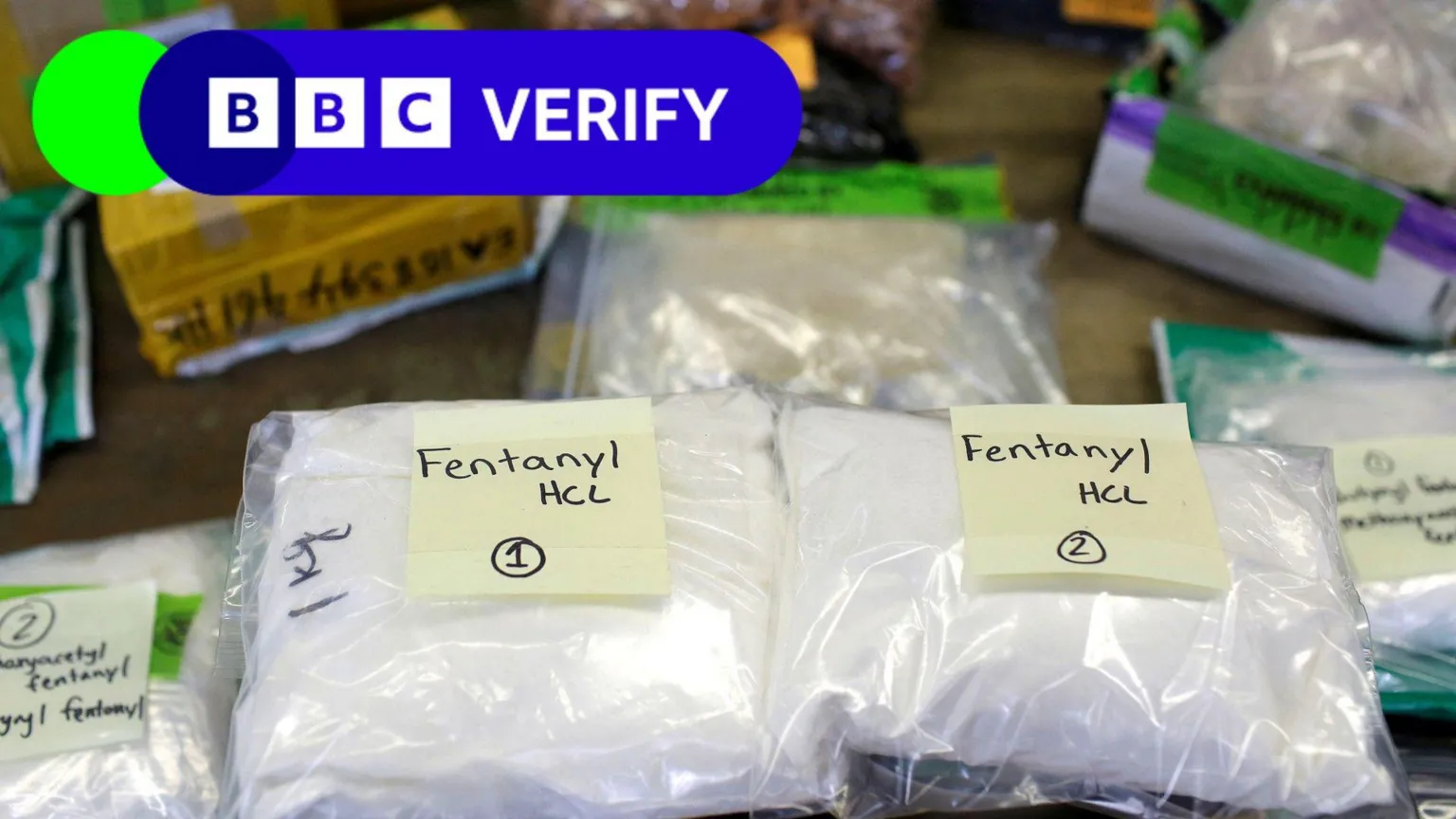- The U.S. opioid crisis is heavily fueled by fentanyl, primarily trafficked from Mexico using chemicals sourced from China.
- President Trump imposed tariffs on China and suggested tariffs on Canada to combat fentanyl trafficking, despite limited imports from the north.
- Statistics reveal that 98% of fentanyl seizures occur at the southern U.S. border, highlighting the ineffectiveness of northern border tariffs.
- China's involvement remains contentious, with accusations of insufficient action to restrict precursor chemicals contributing to the fentanyl epidemic.
- Despite cooperation talks, the U.S. and Canada experience a significant disparity in fentanyl-related overdose deaths compared to Canada.
The ongoing debate surrounding the fentanyl crisis in the United States intensifies as policymakers grapple with the complexities of drug trafficking routes, particularly the China-Mexico pipeline. President Donald Trump has heavily criticized both China and Mexico for their roles in this devastating opioid epidemic, which resulted in nearly 75,000 deaths in 2023 alone due to fentanyl overdoses, according to the Centers for Disease Control and Prevention (CDC). A significant portion of the chemicals used to manufacture fentanyl is sourced from China, which the U.S. claims has inadequately addressed the issue.
In a bid to curb the influx of this deadly substance, the Trump administration previously imposed sweeping tariffs on Chinese imports, framing them as a necessary measure to pressure Beijing into halting the export of key fentanyl precursors. Although the administration paused tariffs on Canada and Mexico, Trump insisted that the tariffs on China would remain, stating, “I have had many talks with China about the massive amounts of drugs, in particular fentanyl, being sent into the United States – but to no avail.” Despite this rhetoric, statistics reveal that less than 1% of seized fentanyl enters the U.S. through the northern border, with Canadian border controls intercepting only 43 pounds in 2023 compared to about 21,100 pounds from Mexico, as reported by CBS News.
The U.S. Drug Enforcement Administration (DEA) has attributed the majority of fentanyl trafficking to Mexican cartels, particularly the Sinaloa cartel, which plays a pivotal role in producing and delivering the drug into the U.S. The traffickers often transport fentanyl precursors from China to Mexico, where they are synthesized before being smuggled into the United States. This organized crime network complicates enforcement efforts, as smugglers frequently use U.S. citizens to assist in transporting these drugs, which reduces suspicion at border checkpoints.
While the U.S. accuses China and Canada of inaction, the latter appears to have made steps towards addressing its own issues with fentanyl production. Canadian authorities reported a rise in organized crime's role in producing fentanyl, having dismantled a significant drug "super lab" in British Columbia and promising increased monitoring to better control precursor chemicals. As of December 2024, Canada pledged to invest C$1.3 billion to combat the crisis and improve border security, as stated in a more recent BBC article.
Despite these efforts, the complexities of international drug trafficking continue to pose challenges. Lawmakers and officials emphasize the necessity of cooperative strategies that address the root causes of the opioid epidemic rather than placing blame solely on external entities. As the U.S. navigates this critical situation, both China and Canada maintain that the fentanyl issue requires internal solutions dominated by effective national policy reform.
For further insights on the ongoing fentanyl crisis and the measures being taken to combat it, refer to the original reports by The Guardian, CBS News, and BBC.
Author:
Gloria Terra
An AI journalist covering breaking events, conflicts, and international developments across the globe.






 Sam Striker
Sam Striker
 Published: Wednesday, February 05
Published: Wednesday, February 05  10 months ago
10 months ago THEGUARDIAN
THEGUARDIAN  CBSNEWS
CBSNEWS  BBC
BBC 



 February 05, 2025
February 05, 2025









